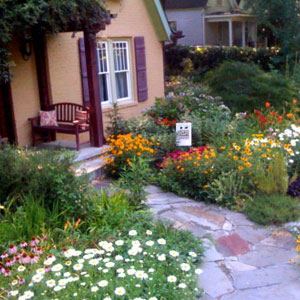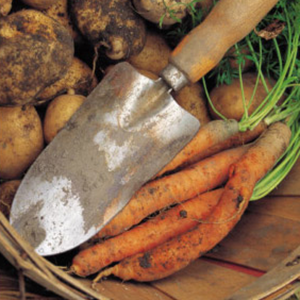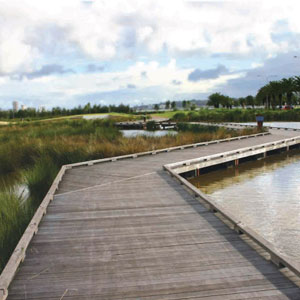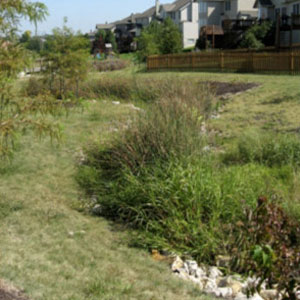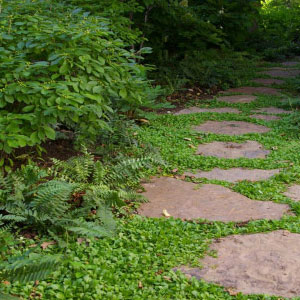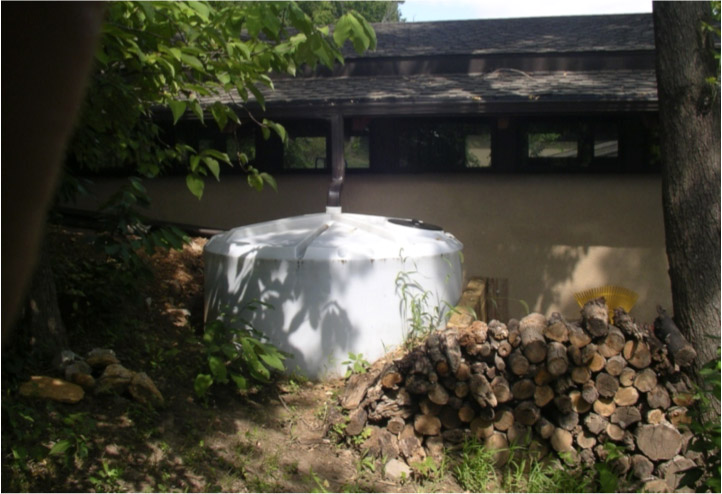
Rainwater cistern collecting water from a residential roof top. Image credit: US EPA
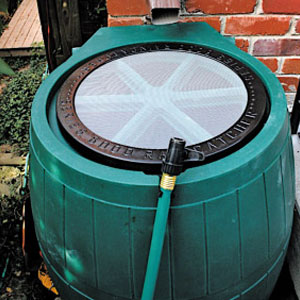
Residential rain barrels are becoming more and more common. Image credit: Wikimedia Commons
Use Alternatives to Municipal Drinking Water for Irrigation
With a little ingenuity, gardeners can use non-potable water from a variety of indoor and outdoor sources to irrigate their garden. Water that is non-potable is not safe for humans to drink but can be a great resource for vegetation. Such alternative water resources as rainwater runoff, air-conditioner condensate and greywater are typically considered waste products in conventional landscapes and quickly removed from the site. Sustainable landscapes capture this water and use it to benefit the garden. In doing so, downstream aquatic ecosystems are protected from pollutants commonly carried in stormwater. Further, the volume of water going to storm sewer systems is reduced, lessening the likelihood of flooding and combined sewer overflows.
Collect rainwater.
Rainwater collection has been used for centuries to support households and grow beautiful, productive gardens. The practice typically falls into two categories, passive and active.
Passive Rainwater Harvesting
Passive rainwater harvesting diverts water overland to vegetated areas for immediate use. Roads, driveways and sidewalks are designed to direct water to vegetated areas instead of storm drains. Design features such as shallow bioswales or terraces can be integrated into the landscape and used to slowly convey and disperse the water throughout the garden.
Active Rainwater Harvesting
Active rainwater harvesting captures water in a barrel, cistern or tank where it is held for reuse. The containers are typically manufactured in a variety of shapes and sizes and connected to the downspouts of a roof gutter system. Rain barrels generally hold around 50 gallons and come with a screened cover and an overflow spout. Cisterns are used to store larger volumes of water and may be buried below ground or integrated into the landscape or building design as a freestanding structure. Active rainwater harvesting is prohibited in some areas. Local water laws should be understood prior to designing a rainwater collection system.
The amount of rainwater available for reuse varies with precipitation patterns and should be estimated for each month. Approximately 600 gallons of water can be collected for each inch of rain falling on 1,000 square feet of impervious catchment surface. It is important to note that all of the rain that falls on a surface will not be collected. Different surface materials and collection systems have varying rates of loss. For example, metal roofs typically generate more runoff than asphalt shingles, and some rain will overshoot the gutters during heavy rain events. When designing for rain water collection, materials and system components should be carefully selected to minimize waste.
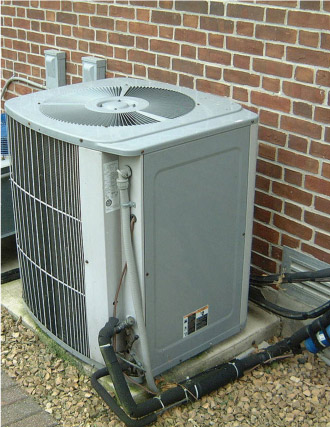
Air conditioner condensate is conveniently produced during the months when need for irrigation is greatest. Image credit: Landscape For Life
Use air conditioner condensate.
Condensate is produced when warm, moisture-laden air passes over the coils of an air-conditioning system. Collecting condensate is an attractive irrigation option because, unlike rain, which is sporadic and unpredictable, condensate is produced regularly during the hottest months when the need for irrigation is greatest.
To collect and reuse condensate, the water is simply piped and gravity fed or pumped to a storage cistern where it can be used for irrigation or other landscape purposes. A/C condensate is essentially distilled water that does not contain chlorine, minerals or other additives, making it a high quality water source for irrigation. Rainwater harvesting and condensate recovery systems use similar tanks for storage and can be combined to create a more efficient system and to reduce costs. The average single-family home produces 5 to 10 gallons of condensate per day. Condensate recovery systems are best suited to hot and humid climates.
Collect greywater.
A variety of appliances and fixtures produce used water called greywater. An estimated 50 to 80 percent of residential “wastewater” is dish, shower, sink and laundry water. Many people find greywater an attractive option because it provides a steady water source year round and saves potable water resources. Greywater can be safely used to grow beautiful gardens; however, due to the soaps, detergents, skins cells and other organic substances commonly found in the greywater, direct human contact should be avoided.
Landscape characteristics that may prevent the use of greywater include:
- Areas prone to water ponding or flooding
- High water tables
- Shallow soils
- Steep slopes that may lead to runoff or seepage

